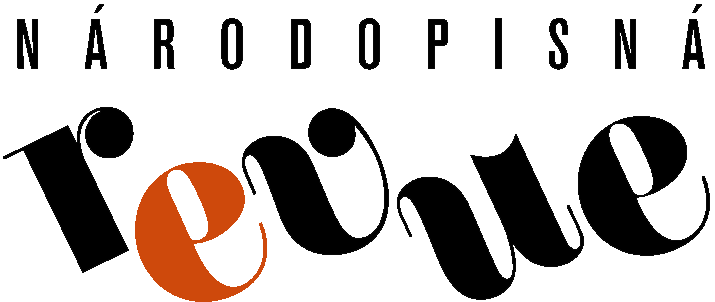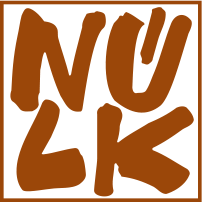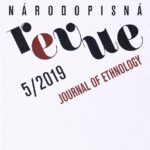Studies
The Worker for the Peasant, the Peasant for the Worker: the Transformation of Harvest Festival from a Traditional Folk Feast into a Tool of the Politics of Normalization in Czechoslovakia (Daniel Drápala)
Dance Parties and the Symbolic Construction of Communities in the Era of Late Socialism in Czechoslovakia (Oto Polouček)
“Do Not Allow History and Memory to Be Forgotten!” Re-emigrants from Yugoslavia as a Memory Community of an Alternative Collective Memory (Michal Pavlásek)
Tailor’s Guilds and Their Influence on the Formation of Women’s Rural Dress in Central Europe in Early Modern Times (Martin Šimša)
Czech Prosaic Folkloristics after 2000: Between Continuity and Revitalization (Petr Janeček)
The Worker for the Peasant, the Peasant for the Worker: the Transformation of Harvest Festival from a Traditional Folk Feast into a Tool of the Politics of Normalization in Czechoslovakia
In the past, harvest festival was a distinctive custom in the life of rural communities. Its visual attractiveness and the social context of its organization meant that since the eighteenth century it was exploited as a representative element of rural culture on diverse public occasions. From the late nineteenth century onwards, harvest festival underwent several transformations, and harvest festivals in the Central European village were increasingly organized by the local government or by civic associations and were thus no longer strictly tied to a particular farmstead. While in some places local forms of harvest festival remained safeguarded even after the social changes of 1948, the mid-twentieth century also witnessed the beginning of harvest festivals organized by the political regime. It was mainly national harvest festivals in the 1970s that were large in scale, besides district and regional harvest festivals. Their organizers maintained some elements that linked these festivals to the traditional form of the feast (the harvest wreath, thanksgiving speeches by agricultural workers, the involvement of people dressed in folk costumes). The schedule of events included at such festivals, however, was subject to the ideological needs of state socialism, and harvest festival became an instrument to celebrate the successes of socialist agriculture (and the related processing industries). It was mainly the entertainment events that displayed the loosening of ties to agriculture, whereby harvest festivals became largely based on mass forms of popular culture and consumption. Agricultural workers thus became participants in a grand theatre performance with ideological outlines, and for playing a role in this spectacle they received cultural and material rewards.
Dance Parties and the Symbolic Construction of Communities in the Era of Late Socialism in Czechoslovakia
Dance parties constitute a field that concisely reflected the processes of modernization and urbanization of the Czech countryside in the 1970s and 1980s. Dance parties can also be perceived as places that have maintained their stable position in the hierarchy of values and ideas accepted by local inhabitants, which are, among other things, associated with the viability of their own community. This was possible due to the symbolic function of dance parties – phenomena with symbolic significance are endowed with high adaptability to changes. The stable significance of dance parties for a community can be exemplified by discussions conducted in the fields of space, generations, and power. These discussions understand dance parties as a subject based on which ideas about the ability of a community to function are communicated. The symbolic function of dance parties is the reason their existence is not called into question. This paper is based on doctoral field research, which was carried out in two different locations – in a small rural town facing more intensive processes of modernization and in two rural municipalities (everything though is set in a wider regional context).
“Do Not Allow History and Memory to Be Forgotten!” Re-emigrants from Yugoslavia as a Memory Community of an Alternative Collective Memory
The study follows the trajectory of a group of re-emigrants who took an active part in the partisan (antifascist, or Communist) resistance movement during the Second World War in Yugoslavia and who established their own partisan unit, the Czechoslovak Brigade of Jan Žižka. After the war, partisans with Czechoslovak citizenship decided to answer the call from Czechoslovakia, and they and their families settled the areas from which the old German residents had been expelled. After their arrival, the state welcomed them as antifascist heroes (freedom fighters), but at the local level, they were accepted as undesired “outlanders”, “other Czechs”, or “Yugoslavians”. After Cominform issued its first resolution, the regime of the Communist Party of Czechoslovakia stigmatized them as being “unreliable for the state”. After the fall of the Communist regime in 1989, they found themselves in a position of memory bearers, a position that did not correspond to the contemporary hegemonic anti-Communist narrative. Due to this fact, the second generation of re-emigrants in particular feels that their ancestors have been unjustifiably erased from history, their legacy and imagined family honour unrecognized. At their own commemorative meetings, they clearly demonstrate their dissatisfaction with the contemporary exclusion of their partisan ancestors from the post-Communist national narrative. I argue in the text that the perceived non-ethnic otherness in the past alongside their historical experience and the contemporary post-Communist politics of memory led the re-emigrants to the formation of their own memory community (and thus identity).
Tailor’s Guilds and Their Influence on the Formation of Women’s Rural Dress in Central Europe in Early Modern Times
The aim of the study is to capture the process of the formation of women’s rural dress in Central Europe in the early Middle Ages. This period brought many new impulses to women’s clothing which resulted both in the emergence of national styles of clothing (Italian, German, and Hungarian), and the rapid adoption of pan-European fashion waves of Spanish and later French fashion clothing. This took root in the noble environment first, and then in the cities. The study tries to answer the question in what way these novelties were mediated to rural residents and who did this. The author shows how the field of competences of city tailor guilds spread from cities to adjacent manors, the residents in which were forced to have their garments made exclusively by guild tailors. Thanks to noble decrees, tailor pattern books served, among other things, as models for most garments made for subjected rural residents. The author analyses period depictions, inventories of estates, and estates to orphans. He shows that most hitherto written works fail when connecting the depictions and the terms for garments, the mutual relation of which is rather illustrative than comparative. The problem consists in little knowledge of cut constructions and their period terms. The solution can be brought about by the study of guild books with tailor’s patterns, which include cut constructions and period terms. From the 16th and 17th centuries, these books have survived from the various territories of contemporary Czech Republic, Slovakia, Poland, Austria, and Germany. Due to this we can conduct necessary comparative research into iconographic, constructional, and written sources in Central Europe, and to acquire new information about men’s and women’s clothing and basic garments.
Czech Prosaic Folkloristics after 2000: Between Continuity and Revitalization
The study deals with the principal tendencies in the development of Czech prosaic folkloristics after 2000, and it analyses the revitalization of folkloristics, which began after a period of certain instability in the discipline, uncertainty in research activities, and low productivity in the 1990s. The new millennium saw quite a vigorous increase in research on folklore within Czech ethnological and anthropological studies, which became evident mainly in the following research domains: research on collective and family memory; research in the field of contemporary legends, rumours, and contemporary folklore in general; research and indexing of “traditional” legends; and the revitalization of folktale studies. At the same time, new series began to be published, and publication activity itself experienced a significant increase (including the foundation of three folkloristic series, even by non-academic, commercial publishing houses), as did the number of international scholarly contacts. For this reason, prosaic folkloristics can be by rightly considered to be one of the most fruitful (sub)disciplines of the Czech ethnological and anthropological sciences.



